Announcements and News:
Site Navigation:






Page address:
File created:
May, 2001
Last modified:
May 5, 2003
Definitions:
Double-click on any word
Announcements and News: |
date __________
Read these questions, then answer them while watching the video "Glaciers" from The Earth Revealed series. After the video is done, compare your answers with other students to verify them.
| 1. Some areas sculpted by glaciers are:
2. Name 2 lake systems scraped out of the rock by glaciers:
3. Fine silt from glaciated areas formed rich soils in:
4. The same changes made to the Earth's surface by existing glaciers can be found in areas of the world far from glaciers, which indicates:
5. GLACIERS are:
6. Glaciers FORM where what two conditions are met?
7. Describe what happens as snow accumulates year after year.
8. Generally, what happens after ice accumulates to a thickness of 20 meters?
9. Describe how glaciers flow downhill:
10. What causes glaciers to glide with basal slip instead of flow?
11. Name and list the differences between the main types of glaciers.
12. How is the movement of a continental ice sheet different from that of a valley glacier?
13. All glaciers move ice from areas where snow accumulates to:
14. If ice moves downhill faster than it can melt away, the snout, or front of the glacier will:
15. If not enough ice moves downhill to compensate for what melts, then the front of the glacier will:
16. Glacier ice is continuously moving __________________ , no matter what the front or snout of the glacier is doing. 17. Where do the tons of material moved by the glacier come from?
18. What evidence of glaciers is left behind from the scraping, polishing action of the glacier?
19 Contrast the shapes of glaciated with unglaciated valleys.
20. The piles of unsorted debris dumped at the edge of a glacier is called:
21. What is a moraine?
22. What does the study of moraines tell us about the movement of glaciers?
23. Overlapping moraines indicate that:
24. What is an ice age?
25. How many ice age cycles have occurred over the past million years?
26. The regular repetition of ice ages suggests that the world may be moving toward:
27. If tilt of the Earth on its axis and the planet's uneven orbit both cool the planet at the same time, what may happen?
28. How does the evidence of past temperatures from fossils and the planet's orbital cycles compare? A. No correlation (connection) between them B. They correlate (agree) throughout all of Earth's history. C. They correlate for some of the orbital cycles, but not all. 29. Ice ages could be triggered by a combination of:
30. What were some effects and features of the last ice age?
31. Loess is more (fertile). What is loess?
32. Practically any material passing through the atmosphere may be:
33. Name some things found in glaciers:
34. Which gases in glacier bubbles are found in higher quantities in the atmosphere now than in ice formed before the end of the last ice age?
34. Which gases in glacier bubbles have shown the greatest increase since the Industrial Revolution?
35. How much rise in sea level could occur as glaciers continue to melt?
36. Describe the life of a glaciologist.
|
Some of the most picturesque landscapes on
Earth owe their existence to glaciers. There are many examples:
spectacular mountain ranges such as the Alps, Himalayas, and the Rockies
were sculpted by repeated glaciation. Yosemite Valley, here in the
Sierra Nevada Mountains, would have been just another nondescript river
valley if glaciers hadn't carved it to its present shape. Many of the
world's most beautiful lakes were gouged out of hard rock by glaciers.
These include North America's own Great Lakes and the famous lochs of
Scotland. Even the great expanses of rich agricultural soils that
blanket China, and the Soviet Union, Canada, and the United States owe
their existence to glaciers. Moving glacial ice pulverizes the
underlying rock into silt-sized fragments. This silt was eventually
transported and concentrated by the wind into the vast fertile soils of
today.
Early scientists didn't really appreciate the important geological role of glaciers. Even geologists were convinced that glaciers had never existed outside of their present locations over the last one million years. A breakthrough came in 1836 when Swiss scientist, Louis Agassi, reported evidence that the inhabitance of medieval villages in Europe had moved their towns to keep pace with advancing glaciers. Further study revealed that glaciers leave behind a distinctive deposit of sediment like these boulders as they melt back and retreat. Geologically recent examples of these sedimentary deposits, found hundreds of kilometers from the nearest glacier, demonstrated to Agassi that vast portions of the continents of the Northern Hemisphere had been recently covered with glacial ice. Observations like these led to the realization that glaciers are active and powerful agents of landscape evolution. Glaciers are large, long-lasting masses of ice which slowly flow across the land. While most places from time to time have temperatures cold enough for snow and ice to form, only in a few of these places do conditions permit the growth of glaciers. Glaciers come from the accumulation of snow, either in polar regions, or in high altitudes, or even at the Equator at very high elevations on the tops of mountains. So wherever you have precipitation that falls in the form of snow, you can get a glacier. And there's one other requirement, and that is that more snow has to fall in the winter than melts in the summer, so that in every twelve-month period, some of the previous winter's snowfall is left over. So as snow accumulates year after year a glacier begins to form. The actual manner in which snow is converted into glacial ice involves compaction and rearrangement of snow crystals. There's a process that goes on as each layer of snow is added year by year, that's residual snow from the previous winter. It compacts under the weight of new snowfall, and as that compaction takes place, the snow crystals are pressed closer together. The air in the original snow pack is generally expelled by this compaction, and the snow crystals join together to form an intermediate substance between snow and ice, which we call "firn." It's an old Swiss term that's still used today, so eventually the firn itself is more compact, more re-crystallized, and it becomes glacier ice. Subject to extreme instantaneous stress ice shatters like glass, but if stress such as gravity is applied gradually over a long period of time, the ice bends. This process called "plastic deformation" explains how glaciers move. Generally, ice must accumulate to a thickness approximately 20 meters before movement starts. Pulled by gravity, ice in a glacier typically shifts down slope a few millimeters per day. To study glacial flow, Louis Agassi and his students built a hut on the ice itself. They observed that the center of the glacier moved most quickly while friction slowed down movement along its sides. A similar phenomenon is observed in rivers and streams. Scientists like Agassi also wanted to understand how glaciers flow internally. But it wasn't until early in the post World War II era that glaciologists were able to drill a hole through a Swiss glacier. This was a hole several hundred meters deep, maybe a couple of inches in diameter or smaller, but they put an aluminum tube in that hole right down to the bottom of the glacier. The scientists discovered that the tube bent as it shifted down-slope. So just as friction slows movement of ice at the sides of glaciers, it slows movement at the base as well. Scientists also discovered that glaciers not only creep over the bedrock, but in places break free to glide across it. Such basal slip is lubricated by water melting from the ice. Streams of this sub-glacial melt water commonly pour from the snouts of glaciers. There are two common types of glaciers. In mountainous regions at high altitudes, glaciers fill stream valleys. Their movement down-slope is confined by the paths of the valley, so these rivers of ice are known as "valley glaciers." On landmasses near the poles, such as Greenland and Antarctica, single giant glaciers cover vast regions. These glaciers are called "continental glaciers" or "ice sheets." Ice sheets are actually spread across the continent like broad domes. The thickest part of the dome is at the center of the glacier where the greatest snowfall takes place and causes ice to build up to its greatest thickness. The weight of this thicker central region forces the glacier to radiate in all directions, as opposed to the relatively straight downhill movement of the valley glacier. Regardless of type, all glaciers move ice from its point of origin to areas where it melts. In a typical valley glacier, ice builds up year after year at the head of the glacier in the so-called "zone of accumulation." Down-slope the ice melts away faster than it can build up at that lower, warmer altitude. This is the so-called "zone of wastage." These two zones are divided by the "snow line," which can actually be seen on some glaciers during the summer months. Down-slope of the snow line melting snow exposes old, silty firn in the zone of wastage. Up-slope the glacier is permanently covered with fresh white snow. The snow line shifts up or down the surface of the glacier from year to year. During cool years the snow line lies at lower elevations than in warm years. If ice moves into the zone of wastage faster than it melts away, the snout of the glacier will advance farther down-slope. But if not enough moves into the zone of wastage to compensate for melting, the snout of the glacier will retreat up-slope. Whether the snout of the glacier advances or retreats, ice within the glacier itself is continuously flowing down-slope to melt away. As it does so, the ice carries tons of rock, silt, and other debris. Some of this material comes from the mechanical weathering and toppling of rocks onto the surface of the glacier; other material is plucked and scraped out by the ice as it flows across the bedrock. Well, glaciers erode in a very characteristic style. They polish. They grind. They gouge. They pluck away at the rocks that are there, totally destroying any topography that was already present. Any streams in its path are obliterated by the oncoming ice. The ice itself is hardly pure; it's dirty; it's filled with everything that the ice has previously scratched and ground away at. So a glacier is moving like ice-filled sandpaper and uses the rocks and sand debris within itself to further gouge and scrape the earth. The tremendous erosive power of moving ice is evident in areas where glaciers have melted away exposing the bedrock. These surfaces were polished smooth by glacial ice. Grit caught beneath the glacier carved long scratch marks, called "striations," in the polished rock as the ice flowed across it. On a more impressive scale, the valleys once occupied by glaciers are carved out, acquiring steep walls and broad gently sloping floors. This "U-shaped" valley profile contrasts greatly with the "V-shaped" profiles typical of un-glaciated stream valleys. At the edges of the glacier, eroded material is dumped out by the melting ice. This unsorted rock debris is known as "till." If the snout of the glacier remains in about the same position for a long time, a very great mound of till called an "end moraine" may form. Moraines can also accumulate at other places next to glaciers. "Lateral moraines," for example, grow where till is deposited along the sides of glaciers. Where two glaciers combine, lateral moraines merge forming "medial moraines." Understanding moraine deposition is of great importance to geologists because it can be used to reconstruct the history of glacial movement. For example, overlapping moraines not only show the position of a glacier at various times, but also indicate that glaciers typically advance and retreat over and over. It was evidence like this that helped geologists recognize that the Earth has experienced repeated cycles of glaciation, or "ice ages," over the last two million years. An ice age consists of a gradual cooling of the climate and growth of glaciers worldwide terminated by a warm inter-glacial climate during which glaciers melt back and retreat. By reconstructing the glacial history of the Earth, we now understand that changes in sea level and the evolution of life are also linked with glacial cycles. What's less clear, however, is the cause of ice ages, and a number of theories attempt to explain the processes responsible for glacial cycles. There have been about ten ice age cycles over the last one million years. Any theory that is advanced to explain these cycles must take into account the regular repetition of glacial activity and the link between glacial cycles and global climate. The repetitive nature of ice ages during the past two million years suggests that the world may again be moving toward a period of deep freeze. This is not likely to begin within our lifetimes, but may commence within the next few thousand years. Most scientists believe ice ages are tied to changes in the position of Earth as it orbits the sun. As the Earth rotates, if occasionally it tilts a bit, then a good portion of the Earth will undergo sudden cooling. We know that happens. Another change occurs, and we know this happens as well, with a not perfect revolutionary period of the Earth's rotation around the sun, it's more elliptical, and in certain stages it becomes more elliptical than other times. We know that happens. The theory for the global cooling of the Earth and the formation of the ice age is that on occasion both the wobble and noncircular rotation or revolution of the Earth's passage around the sun occur together. And we get global cooling that is unique to that time. Recent data support this orbital explanation for ice ages. Drill cores from deep-sea sediments contain fossils of microscopic plants that were sensitive to ocean temperatures -- indicators of past ice ages and the warm times in between. Using these fossils, scientists have been able to chart the temperature changes in the world's oceans going back nearly a half million years. Scientists have also shown that these changes can be correlated to variations in the distance between Earth and Sun, which occur with regularity. But these cyclic changes in Earth-sun geometry have been going on for the entire history of Earth, and glacial epics are uncommon events. Perhaps the positions of the continents themselves play a role in triggering ice ages. Throughout Earth's history, plate tectonics has shifted continents, changed their shapes, and altered the pattern of ocean currents around them. All of these are critical factors in regulating Earth's climate. And if land masses are near the Poles, they can support ice sheets that could not grow otherwise. So, ice ages could be triggered by a combination of Earth's orbital pattern and the movement of land masses into polar latitudes. The last ice age left striking marks still visible on the landscape. Coastlines the world over shifted because much of the water that had been available to the oceans was frozen instead. We see the sea level drop as much as 300, 400 feet below present day positions. With that dropping of sea level, all the streams of all the continents of the world, being that much higher above present day seas and needing to move down toward the seas, started eroding, digging down, running faster. So all the rivers begin to run faster throughout the world. There was more erosion due to streams. As the last ice age ended, melting icecaps discharged vast quantities of water into the ocean, flooding the lower valleys of these streams. Many have become inlets, harbors, or estuaries. Some have filled with sediment becoming flat, coastal valleys. The retreating glaciers have had another, though less obvious, effect on the landscape. The other big effect happened at the end of the ice age. As the ice began to melt, a tremendous weight was taken off the continents of the world, and the landmasses began to rise. We've already seen how sea level has dropped during the ice age, and now at the end the lands begin to rise. Today the Hudson Bay region has risen as much as 400 feet and is still rising today. Across the interiors of continents, the ice sheets left moraines hundreds of kilometers long. Streamlined mounds of till, known as "drumlins," were sculpted by flowing and melting ice. Thousands of lake filled basins, called "kettles," were caused by the melting of ice buried in till. Sinuous ridges of sediments left by sub-glacial streams, known as "eskers," wind across the land. Most important to our modern civilization, however, are the wind-blown deposits of glacial silt, or "loess," which have weathered to form rich farmland soil. Among the most profound effects of the ice ages on our world was the formation of land bridges. The dropping sea level exposed low lying coastal areas in some cases linking land masses that are presently separate. The most famous land bridge between Asia and North America allowed animals, including humans, to migrate between the two continents. Evidence of ice ages is not only recorded by the landscape. Scientists have also discovered important clues to Earth's past within glaciers themselves. Glaciers contain within their stratigraphic layers all of the material that fell with the snowfall that incorporated within it. One can liken glaciers as a depositional environment, a glacial environment, and in the deposits contain events of Earth's history that occur simultaneously during the depositional process. You see, ice sheets are essentially atmospheric processes. Practically any material passing through the atmosphere may be trapped in glaciers as they form. Pollen, volcanic ash, and meteorites have been discovered in the ice. Even bubbles of an ancient air have been found representing a valuable record of Earth's past atmosphere and climate. Since the early 1970's, an international project has been underway to drill into Greenland's vast continental glacier and obtain ice core samples. Called the "Greenland Ice Core Program," this effort involves scientists from countries around the world. The prime difficulties in an operation, a field operation such as drilling in ice, relate primarily to the climate, the weather. It's not the best place to work, but it's overcome somewhat by the technique used today to excavate trenches and cover the tops of the trenches with some form of a material. And to work, if you will, underground with what power sources available and so forth. So we can eliminate the inclement weather problems and work as we do on a 24-hour basis. After all, it does take up to three years to drill through the bedrock in any location whether it be Greenland or Antarctica, and that length of time requires a lot of stamina from the crew involved. The cores from Greenland date back over 100,000 years. The age of the ice is determined by counting bands which form seasonally. High-density ice bands are typical of winter months; low density of summer. In deep ice the bands are compressed together making them impossible to see, so chemical methods including Carbon-14 dating are used instead to determine the age of the ice. Not all of the ice core analysis is done in the field. Ultimately, the samples are carefully packed and transported to several research institutions. One of the foremost centers for the study of ice cores is the State University of New York at Buffalo. An important goal of this project is to determine the composition of gases trapped in the ice. In general, the content of nitrogen and oxygen in bubbles shows little change relative to our modern atmosphere. But the levels of such important greenhouse gases as methane and carbon dioxide rise significantly in bubbles trapped after the last ice age. Scientists aren't sure whether the rise in greenhouse gases ended the ice age, or the end of the ice age simply allowed these gases to increase because of the greater biological activity. Another indicator of past climate is "stable oxygen isotopes," which are atomic variations of the element oxygen that do not decay. These isotopes are frozen within the ice itself at the time of its formation. The O-18/O-16 ratio of a snow sample or an ice sample in a core reflects the temperature at which the precipitation formed in a precipitating cloud above. This is preserved in the ice cores, and by measuring continuously the O-18/O-16 ratios using mass spectrometers, one determines summer and winter layers. By providing data about past temperatures, stable isotope analysis has helped answer a long standing question about the ice ages -- whether or not they occur simultaneously in both the Northern and Southern Hemispheres. I think the major contribution of stable isotope analyses in ice cores, if you look at it from a bipolar point of view, the Antarctic and the Greenland ice cores, the results from both records show us that approximately 10,700 years ago the ice age ended in both North and Southern Hemispheres. That wasn't too many years ago that climatologists and meteorologists were even sure that wind systems crossed the Equator. Glaciers also preserve evidence of human impact on the atmosphere. Since the start of the Industrial Revolution, the levels of carbon dioxide, sulfate, and other pollutants have sharply increased in glacial ice. The Industrial Revolution, which has been attributed to occurring in the early 1800's, 1820's, 1830's produced a major change in the gaseous composition of the atmosphere. This was brought about primarily by fossil fuel, high sulfur content fossil fuel consumption, coal, soft coal, and the productivity of the factories and what have you. The degree to which industrial activity is affecting our global climate remains controversial. Understanding natural climate cycles through ice core research will help put human impact in perspective. It will also help us make the adjustments needed to sustain our civilization in a world of continual dramatic change. Glaciers and glaciation are among the first subjects that geologists attempted to study, and understanding them is now more important than ever. Global climate is linked with glaciations, and changes in glaciers are used to make long term predictions of rainfall patterns and of extreme weather such as hurricanes and drought. Understanding the cause of glacial cycles is also critical to the current debate over global warming and the Greenhouse Effect. Our interglacial climate is currently undergoing a warming phase, which is at least in part natural. Some of this warming, however, may be due to the 25 percent increase in atmospheric carbon dioxide that has occurred since 1850. Only by understanding the natural process of interglacial warming can we accurately monitor and predict any human impact on the climate. Glacial ice volume is the principal factor controlling sea level. Sea level rose about 12 centimeters over the last century, again due to the warming of the inter-glacial climate and retreat of the glaciers worldwide. But the current rate of rise is about three times as fast, and estimates of sea level rise over the next century vary from 30 centimeters to over 2 meters. This may not sound very threatening, but 30 centimeters of sea level rise would correspond to 500 meters of coastal flooding in some areas of the world. For this reason, glaciation is tied to the future of some of the world's great coastal cities. Glaciers are responsible for fascinating landforms and for cycles of great change on the Earth's surface. The regular cycles of glacial advance and retreat are in a sense to pulse of the Earth, or a clock by which we measure portions of geologic time. But even more important, glacial cycles contain vital clues, clues to the conditions that future inhabitants of the Earth will someday inherit.
|
The video program "Glaciers" from The Earth Revealed series, is available online from Annenberg/CPB Online. (Return to top of page)
Transcript copied from http://walrus.wr.usgs.gov/infobank/programs/html/school/moviepage/21.01.01.html
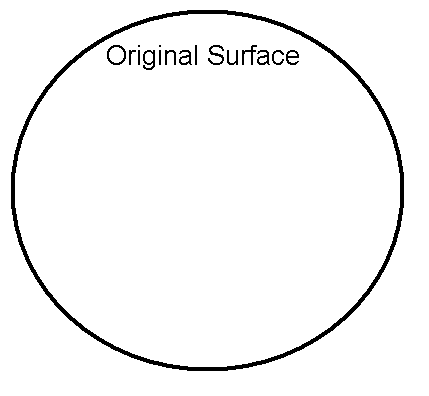
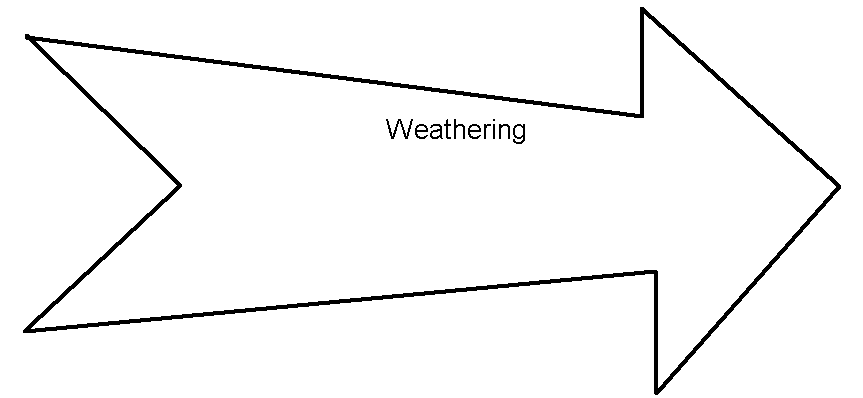

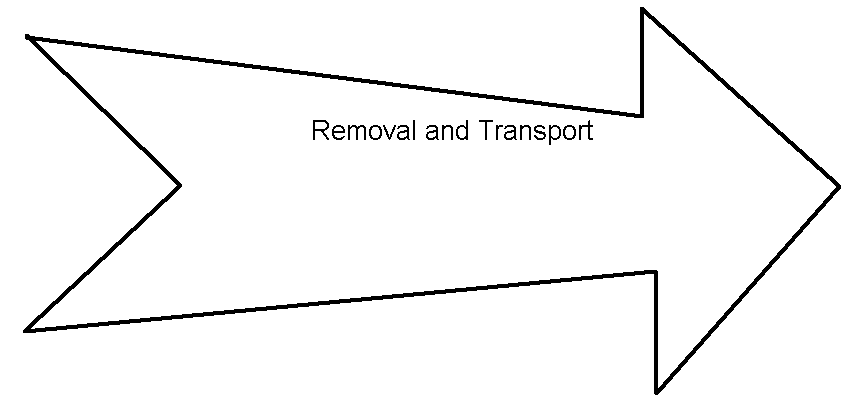
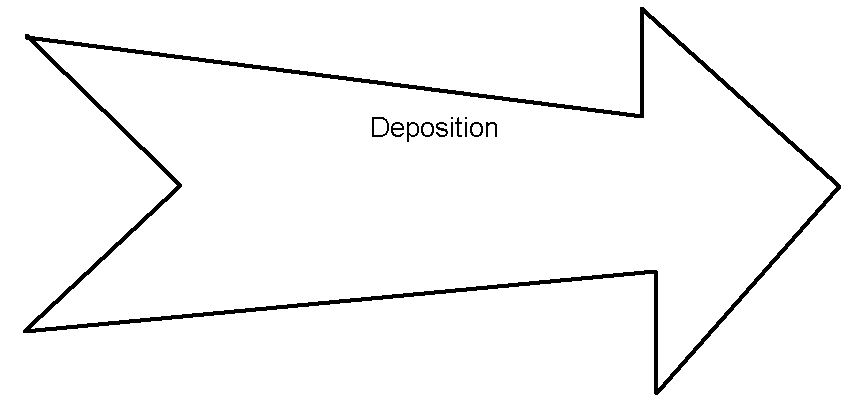
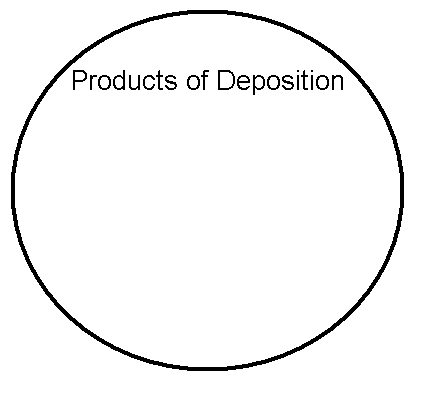




Page address: